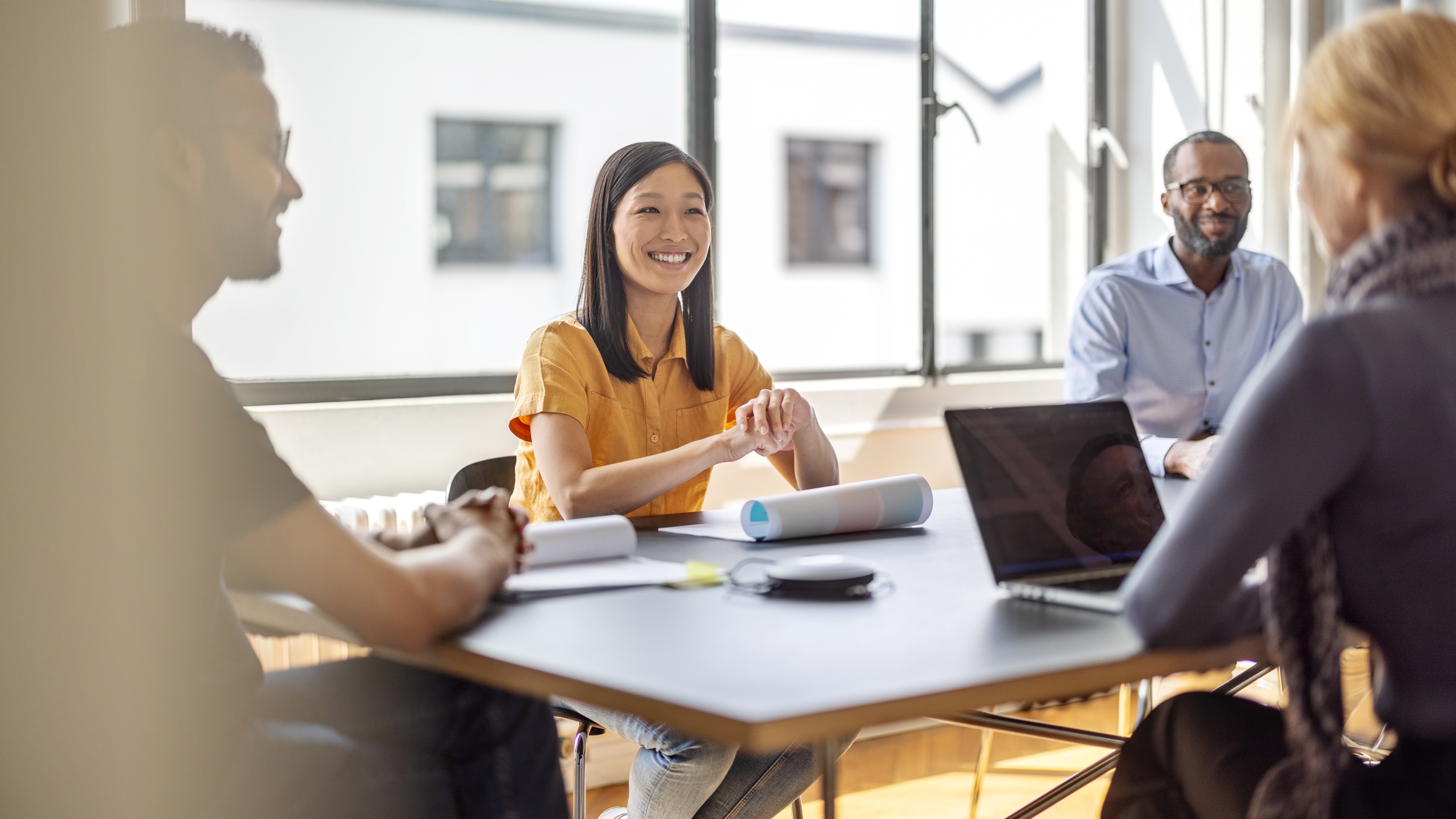Why This Economist Thinks the Fed Is Already Late to Cut Rates
Moody's Analytics chief economist Mark Zandi has some ideas for Jerome Powell.


As the next Federal Reserve meeting approaches, many are waiting in anticipation to learn how the Federal Reserve is going to approach the federal funds rate, particularly as we get into the fall. If cut, lower interest rates are expected to have seismic ripple effects on the rest of the economy, potentially boosting stock prices and kicking the housing market into a frenzy.
For one economist, a rate cut couldn't come soon enough — and it might even be overdue, he argues, based on how the Fed looks at inflation to make decisions. Mark Zandi, chief economist at Moody's Analytics, says the Federal Reserve uses a flawed benchmark to analyze inflation trends, which could affect how the department decides whether or not to cut rates.
Here, Zandi talks to Kiplinger about what he thinks the Fed gets wrong on inflation, what he'd like them to do instead, and what he predicts will happen going forward.

Sign up for Kiplinger’s Free E-Newsletters
Profit and prosper with the best of expert advice on investing, taxes, retirement, personal finance and more - straight to your e-mail.
Profit and prosper with the best of expert advice - straight to your e-mail.
KIPLINGER: You’ve said the Fed is using the wrong gauge for inflation and targeting the wrong level. What do you mean, and what would you prefer?
ZANDI: The Fed targets 2% inflation as measured by growth in what’s known as the personal consumption expenditures deflator. At the current time, it’s a flawed measure of inflation because it includes something called owners’ equivalent rent. That’s the implicit rental cost of owning your own home — it tries to measure what a homeowner would have to pay in rent to live in their home.
In theory, that sounds great. But in practice, it’s very problematic, in large part because the housing market is upside down. The affordable part of the market is extraordinarily tight, with vacancy rates at record lows and rents strong. The high end of the market is a lot softer, with a lot more supply. Owners’ equivalent rent is hard to measure in all times, and it’s impossible to measure now. In the rest of the world, other statistical agencies don’t even try. They exclude OER because it makes it very difficult to identify underlying inflationary trends.
What measure would you use instead?
If I had to pick a measure, it would be so-called harmonized core PCE — “harmonized” in that it’s measured on the same consistent basis as it’s measured overseas, with the fundamental difference being that it excludes owners’ equivalent rent. It’s used in most developed economies — in Europe, Canada, Australia. And the point is, if you look at inflation on a harmonized basis, we’re at a 2% inflation rate, and we’ve been at 2% for about a year.
Should the Fed just declare victory on inflation now?
If you were at the Federal Reserve looking at harmonized PCE (or the harmonized measure for the consumer price index, which is published by the Bureau of Labor Statistics), you’d say mission accomplished, inflation is back in the bottle. And with the economy at full employment — a 4% unemployment rate — you’d have achieved all your objectives. Now it’s time to bring interest rates down to neutral, neither restraining or supporting economic growth.
So the 2% target for inflation is okay, it’s just on the wrong gauge?
The Fed has told everybody they’re taking inflation down to 2%. To ensure credibility, which is critical for the future, I’d keep the target at 2% for now. You’ve got to maintain that credibility. But once achieved, and once the Fed has normalized interest rates, I’d take a wholesale look at things.
The Fed does evaluate their framework every so often — every five years or so — and the next one’s coming around. At that point, they should think about the target and what measures to use. I’m confident most everyone would say that 2% isn’t the right target. Why one number? Why not a range of 2% to 3%, just to buy a little wiggle room when you need it? Other central banks use 2% to 3% as well; ours wouldn’t be the only one. The number certainly isn’t 2%. That’s too low.
Why too low?
The reason you want to target an inflation rate a bit higher is that if you set it too low, some industries will be suffering deflation. Then, if you’re a businessperson, you have to go back to workers and cut wages. They’ll say no, and then you have to go to layoffs. You want the overall inflation rate to be high enough so that the businesses with the least amount of pricing power are at least at zero.
In the meantime, do you think the Fed should lower rates now?
Right now, the Fed has a target range of 5.25% to 5.5% for the federal funds rate. They — and I think everyone — would say that’s a restraint on growth. And I would ask, Why? Let’s get going! Cut rates, see what’s going on, and maybe three months later cut rates again.
If you buy the argument that the Fed has achieved its goal, they should be normalizing. If they switch to harmonized PCE or harmonized CPI, then it becomes easier to start cutting without losing credibility. I fear they’ve got PTSD. They got it wrong in early 2022 when they took so long to start raising rates, and now they’re going to err on the other side and take too long to cut rates.
Why do we need a rate cut at all if the economy is as strong as it looks?
I think the economy is strong and resilient. But why take a chance with rates that are restraining the economy? Things happen. Last year’s banking crisis is a case in point. What else is out there that might break that we don’t know about? I don’t feel like there are cracks out there now, but why take the risk?
How rare is it for a central bank to achieve victory on the inflation front without forcing the economy into recession?
It’s rare. There was one recent example in the late 1990s, although it’s not in the same ballpark. Alan Greenspan was the Fed chair; inflation was becoming an issue, and he stepped on the brakes. But he got a lot of help from the productivity boom that resulted from the internet coming on, and inflation then was very modest compared with what we suffered in the wake of the pandemic.
Where do you see the Fed’s target rate ending up?
I forecast a lot of things. Some things I’m not so confident about, and some things I am. I’m very confident about inflation coming down. My sense is the Fed will have enough evidence by the September meeting, and they’ll start cutting a quarter-point once each quarter, and that will get us back close to neutral by the end of 2025 or early-to-mid 2026. If nothing major takes us off-script, that’s the path forward. A neutral rate is probably around 4%, and it’ll probably migrate lower to settle in mid 2026 at 3%, 3.25% or 3.5%, something like that.
Note: This item first appeared in Kiplinger Personal Finance Magazine, a monthly, trustworthy source of advice and guidance. Subscribe to help you make more money and keep more of the money you make here.
Related content
Profit and prosper with the best of Kiplinger's advice on investing, taxes, retirement, personal finance and much more. Delivered daily. Enter your email in the box and click Sign Me Up.

Anne Kates Smith brings Wall Street to Main Street, with decades of experience covering investments and personal finance for real people trying to navigate fast-changing markets, preserve financial security or plan for the future. She oversees the magazine's investing coverage, authors Kiplinger’s biannual stock-market outlooks and writes the "Your Mind and Your Money" column, a take on behavioral finance and how investors can get out of their own way. Smith began her journalism career as a writer and columnist for USA Today. Prior to joining Kiplinger, she was a senior editor at U.S. News & World Report and a contributing columnist for TheStreet. Smith is a graduate of St. John's College in Annapolis, Md., the third-oldest college in America.
-
 Stock Market Today: S&P 500, Nasdaq Near New Highs
Stock Market Today: S&P 500, Nasdaq Near New HighsThe S&P 500 hasn't hit a new high since February. It's been since December for the Nasdaq.
-
 New Trump 'Big Bill' Incentive Could Help Donors Avoid Capital Gains Tax
New Trump 'Big Bill' Incentive Could Help Donors Avoid Capital Gains TaxTax Policy As U.S. Senate Republicans mark up their version of the One Big Beautiful Bill Act, one provision could give some donors a major tax break.
-
 This Savings Account Earns You More Than $4,000. Here's How
This Savings Account Earns You More Than $4,000. Here's HowSee how a jumbo CD can help you reach your savings goals quicker.
-
 These Are the Key Tariff Issues to Watch in Coming Months
These Are the Key Tariff Issues to Watch in Coming MonthsWhile they're not dominating headlines right now, tariffs are not over. Some key dates are coming up fast that could upend markets all over again.
-
 What to Know About Treasury Inflation-Protected Securities (TIPS)
What to Know About Treasury Inflation-Protected Securities (TIPS)Understanding what Treasury Inflation-Protected Securities (TIPS) are and how to use them in a portfolio.
-
 T-Mobile Offers Senior Phone Plans: Are The Perks Worth the Price?
T-Mobile Offers Senior Phone Plans: Are The Perks Worth the Price?T-Mobile has three senior phone plans. See which perks you receive with each.
-
 Should You Switch to a Budget Wireless Carrier? What to Know About Trump Mobile and Other Low-Cost Options
Should You Switch to a Budget Wireless Carrier? What to Know About Trump Mobile and Other Low-Cost OptionsWith new names like Trump Mobile entering the market, many consumers are curious about affordable wireless plans. Here's how to tell if switching to a budget carrier could actually save you money — and what trade-offs to expect.
-
 Bill Bought a Fridge, and Then His Nightmare Began
Bill Bought a Fridge, and Then His Nightmare BeganA Lowe's customer reached out to me after he encountered the retailer's 48-hour return window for major appliances when his brand-new fridge turned out to be defective.
-
 Savvy Marketing Tips for Financial Pros From a Financial Pro
Savvy Marketing Tips for Financial Pros From a Financial ProThese strategies for marketing, client acquisition and retention can help financial professionals elevate their business and production.
-
 Taste the Nation: Five James Beard Award–Winning Restaurants Worth Traveling For
Taste the Nation: Five James Beard Award–Winning Restaurants Worth Traveling ForFrom coastal kitchens to mountain towns, these celebrated restaurants don't just serve meals — they anchor destination-worthy trips for food lovers.